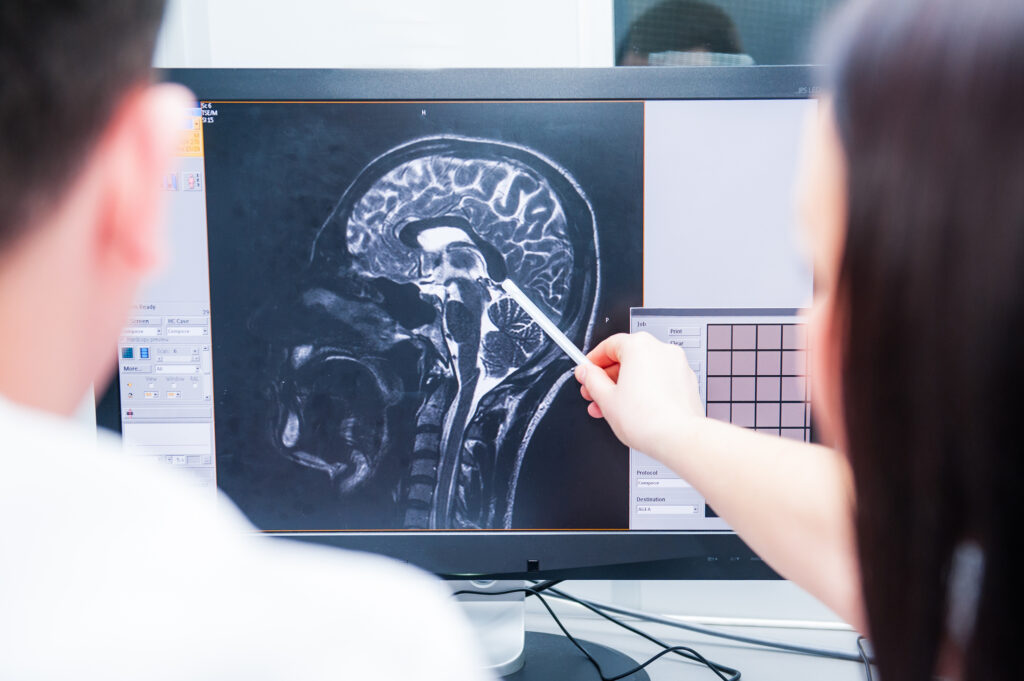Summary: Tritium radiosynthesis is a sophisticated method used in the production of radiolabelled compounds, crucial in various scientific and industrial applications, from pharmaceutical research to environmental studies. This article looks into the principles behind tritium radiosynthesis, the methodologies employed, the challenges faced, and the wide-ranging applications of this technology.
Introduction to Tritium Radiosynthesis
Tritium, a radioactive isotope of hydrogen with a half-life of approximately 12.32 years, is an essential tool in scientific research. Its incorporation into chemical compounds forms tritiated molecules, which serve as tracers in radiolabelling applications. Radiosynthesis involving tritium is a highly controlled and precise process, enabling the study of biochemical pathways, metabolic processes, and drug mechanisms.
Principles of Tritium Radiosynthesis
The underlying principle of tritium radiosynthesis is to introduce tritium atoms into organic molecules. Tritium emits low-energy beta radiation, making it suitable for labelling without significantly altering the properties of the parent molecule. This is advantageous for studying the biological or chemical behaviour of substances in a non-intrusive manner.
Chemical Properties of Tritium
Tritium is chemically similar to ordinary hydrogen and deuterium but differs in its radioactive properties. Its relatively weak radiation enables safe handling under proper protocols. The tritiated compounds emit beta particles with energies of about 18.6 keV, facilitating detection by liquid scintillation counting and other techniques.
Types of Tritium Labelling
- Non-Exchangeable Labelling: Tritium atoms replace stable hydrogen atoms covalently bound to carbon. This method provides stability, as the tritium does not readily exchange with hydrogen in the environment.
- Exchangeable Labelling: Tritium is introduced into positions where it can exchange with hydrogen, such as in hydroxyl or amine groups. This type is more prone to isotopic exchange under ambient conditions.
Methods of Tritium Radiosynthesis
Tritium radiosynthesis can be broadly categorised into several methods, each with its unique mechanisms, advantages, and limitations.
Catalytic Hydrogenation
Catalytic hydrogenation using tritium gas (T2) is a common approach for introducing tritium into molecules. This method uses a catalyst, such as palladium on carbon (Pd/C), to facilitate the exchange between the tritium gas and the target compound.
- Procedure: The substrate is dissolved in an appropriate solvent and mixed with the catalyst under an atmosphere of tritium gas. The reaction proceeds under controlled pressure and temperature conditions, allowing tritium to replace specific hydrogen atoms.
- Advantages: This method is straightforward and effective for introducing tritium at specific positions.
- Limitations: The process requires specialised equipment to safely handle tritium gas and prevent contamination.
Chemical Reduction
Reduction with tritiated reagents, such as lithium aluminium tritide (LiAlT4), is used for more targeted synthesis. This method is beneficial for introducing tritium into carbonyl-containing compounds.
- Procedure: The tritiated reagent reacts with a substrate to transfer tritium during the reduction process. The outcome depends on the structure of the substrate and the reaction conditions.
- Applications: This approach is frequently used for labelling pharmaceuticals where tritium is needed in a specific site for tracking in biological systems.
Tritiation by Exchange Reactions
Exchange reactions utilise tritiated water (T2O) or tritiated acetic acid, allowing the replacement of hydrogen atoms in exchangeable positions such as hydroxyl or amine groups.
- Procedure: The substrate is treated with the tritiated solvent under conditions that favour isotopic exchange. The reaction conditions need to be optimised to ensure efficient incorporation without damaging the compound.
- Limitations: The tritium in these positions can exchange back with environmental hydrogen, leading to potential loss of the radioactive label.
Challenges in Tritium Radiosynthesis
Tritium radiosynthesis is not without its challenges. These arise from the unique properties of tritium and the technical considerations involved in its handling.
Safety Concerns
Due to the radioactive nature of tritium, rigorous safety measures are essential. Tritium is particularly challenging as it can diffuse through many materials, requiring specialised containment methods.
- Radiation Protection: Protective measures, such as using glove boxes and monitoring beta radiation exposure, are crucial.
- Environmental Containment: Tritium can integrate into water molecules, making its containment critical to prevent environmental contamination.
Stability of Tritium-Labelled Compounds
Maintaining the stability of tritiated compounds can be difficult. Exchangeable tritium, for example, can be lost over time due to interactions with moisture or other hydrogen sources.
- Chemical Stability: Non-exchangeable tritium offers greater stability, but achieving this requires meticulous synthesis planning.
- Isotopic Exchange: The possibility of tritium exchanging with hydrogen in biological or environmental settings limits the utility of some tritiated compounds.
High Costs and Limited Availability
Producing tritiated reagents and maintaining tritium facilities come with high costs. Tritium is typically generated in nuclear reactors or extracted from heavy water, making its production limited and expensive.
Applications of Tritium Radiosynthesis
Tritium-labelled compounds are indispensable tools in various fields. Below are some of the primary applications:
Pharmaceutical Research
One of the most prominent uses of tritium radiosynthesis is in drug development. Tritiated drugs allow researchers to track the absorption, distribution, metabolism, and excretion (ADME) profiles of pharmaceutical compounds.
- Mechanism of Action Studies: By labelling a drug with tritium, scientists can observe how it interacts at a molecular level within cells or tissues.
- Bioavailability Assessments: Tritium labelling helps in understanding how drugs are processed by the body, crucial for developing effective and safe therapies.
Environmental and Ecological Studies
Tritiated water and compounds are used to trace water movement and pollutant pathways in ecological studies. This helps in monitoring environmental contamination and understanding the long-term behaviour of various substances in ecosystems.
Biochemical Pathway Tracing
Tritium-labelled compounds are employed to trace complex biochemical pathways, providing insights into processes such as enzyme-substrate interactions, DNA synthesis, and metabolic pathways.
- Enzyme Kinetics: Labelling substrates with tritium allows researchers to measure reaction rates and determine the role of specific enzymes in biological systems.
- Metabolic Studies: Tritium labelling provides detailed information on how organisms metabolise nutrients and other compounds, aiding in the study of diseases like diabetes and obesity.
Regulatory and Ethical Considerations
Given the radioactive nature of tritium, its use in research is subject to strict regulations. Compliance with safety standards and ethical guidelines is essential to ensure safe and responsible use.
Licensing and Regulations
Institutions handling tritium must obtain licences and adhere to regulations set by nuclear and environmental safety authorities. This includes:
- Storage and Disposal: Proper protocols must be in place for the storage and disposal of tritiated materials to prevent environmental contamination.
- Worker Safety: Continuous monitoring of radiation exposure and training for personnel are required to minimise health risks.
Ethical Concerns
The use of radioactive isotopes in research raises ethical considerations, particularly when dealing with environmental impacts and the potential exposure of non-target organisms.
Advancements in Tritium Radiosynthesis
Recent advances in tritium radiosynthesis focus on improving safety, efficiency, and sustainability. Innovations include:
- Microfluidic Synthesis Systems: These systems enable the controlled synthesis of tritiated compounds at a microscale, reducing the amount of tritium used and minimising waste.
- Safer Catalysts and Reagents: The development of novel catalysts that enhance tritium incorporation while being more stable and environmentally friendly is underway.
- Green Chemistry Approaches: Researchers are exploring ways to incorporate tritium using methods that generate less hazardous by-products, aligning with the principles of green chemistry.
Future Prospects
The future of tritium radiosynthesis looks promising, with the potential for even more refined techniques and applications. Continued innovation will focus on:
- Enhanced Selectivity: New methods that allow for more selective labelling, reducing the need for extensive purification processes.
- Applications in Advanced Imaging: The use of tritium-labelled compounds in imaging technologies such as positron emission tomography (PET) for precise diagnostics.
- Sustainability Initiatives: Improved recycling and recovery of tritium to reduce costs and environmental impact.
Conclusion
Tritium radiosynthesis plays an indispensable role in various scientific fields, providing a powerful tool for tracking, studying, and understanding chemical and biological processes. Though challenges exist, from safety concerns to regulatory compliance, continuous advancements are paving the way for safer and more efficient use of tritium-labelled compounds. The future of tritium radiosynthesis lies in innovations that enhance precision, sustainability, and application breadth, making it a vital aspect of modern scientific research.
Disclaimer
The content provided in this article is for informational and educational purposes only and does not constitute professional advice or guidance in scientific, medical, or regulatory matters. While every effort has been made to ensure the accuracy of the information presented, Open MedScience does not guarantee its completeness or suitability for any specific application. The processes and methods described, including those involving radioactive materials such as tritium, should only be conducted by trained professionals in licensed facilities in full compliance with applicable health, safety, and environmental regulations. Readers are responsible for ensuring their activities conform to local laws and institutional requirements. Open MedScience accepts no liability for any outcomes arising from the use or interpretation of the information in this article.




